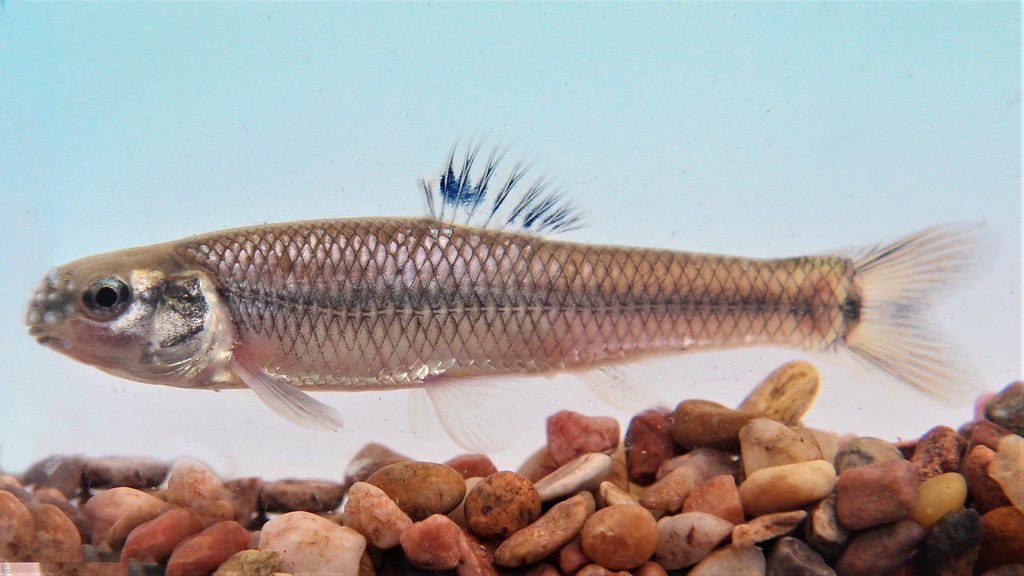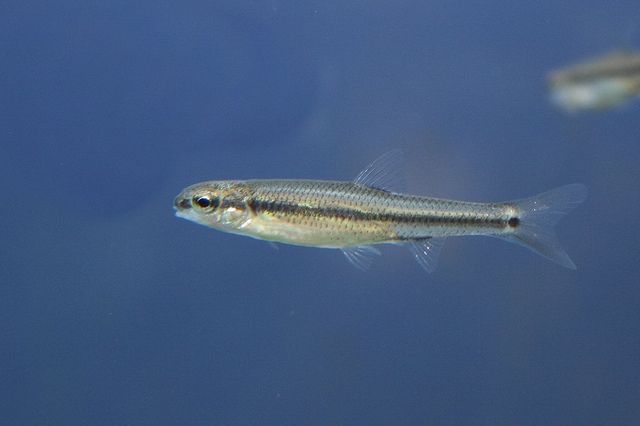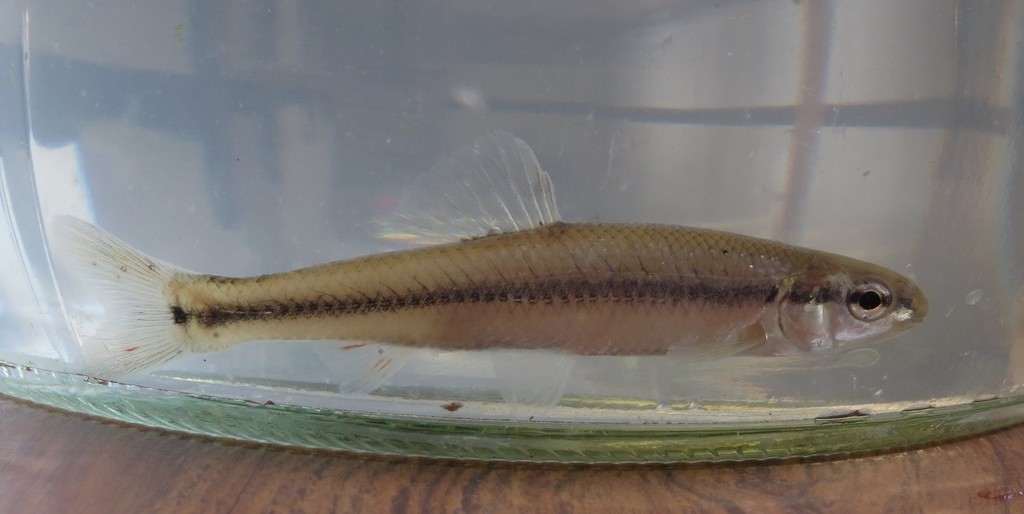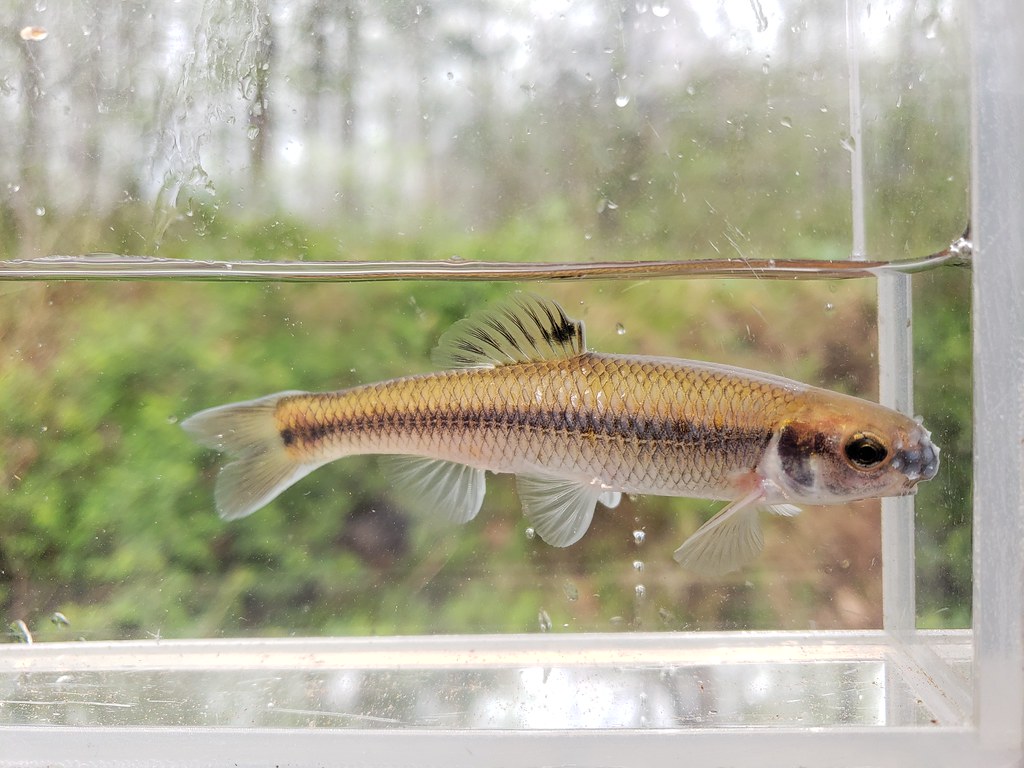The Bluntnose Minnow Fish (Pimephales notatus) is a temperate freshwater fish that belongs to the cyprinid family’s Pimephales genus. Only the Nearctic area is home to the bluntnose minnow. They can be found from southern Quebec and Manitoba all the way down to Louisiana, and west to the Mississippi River watershed.
Its native geographic range stretches from the Great Lakes to Louisiana, south along the Mississippi River basin, and east across the Midwest to New York State. The bluntnose is a highly common freshwater fish in the Eastern United States, and it may be the most frequent.

This fish is fairly frequent. In reality, in the eastern United States, bluntnose minnows are the most prevalent freshwater fish. In the fishing industry, bluntnose minnows are widely used as bait. They’re also employed as a source of nourishment for larger sports fish like bass. Bluntnose minnows play a crucial function in the ecosystem as prey for larger animals and predators on insect larvae.
Body Characteristics
- The term bluntnose relates to the flathead and snout of this species. They have a rounded head and a terminal mouth, though the snout hangs over the mouth a little. The dark coloring on the scales’ edges gives the body a cross-hatched appearance. These fish have cycloid scales, which are a type of leptoid scale. The rings on the scales can be used to determine a fish’s age.
- A bluntnose minnow’s lateral line runs from its head to its tail, ending in a black patch that distinguishes it from a fathead minnow. The scales between the skull and the dorsal fin are smaller than the scales on the rest of the body. The average length of a Bluntnose Minnow is 6.5 cm, with a maximum length of 11 cm. Males get darker during the breeding season, with a silver strip behind the gill cover (opercle) and 16 bumps in three rows on their heads.
- The Bluntnose Minnow Fish is a little silver fish with a dark stripe running from the snout to the tail. The stripe becomes a dot at the tail’s bottom. The upper parts are slightly olive in color, while the sides are bluish in color.
Distribution
From southern Quebec to southern Manitoba, Canada, to Louisiana, United States, the bluntnose minnow can be found in the Hudson Bay and Mississippi River basins. They can also be found on the east coast of the United States, from the Saint Lawrence River in Quebec to the Roanoke River.
Non-indigenous populations have also been discovered in Connecticut, Georgia, Maryland, Massachusetts, New York, Ohio, South Dakota, Utah, Virginia, West Virginia, and Michigan, which are assumed to have been introduced through bait bucket releases or stock contamination.

Habitat
A freshwater fish, the bluntnose minnow spends its entire existence in the water. Bluntnose minnows enjoy small to medium-sized streams and creeks that are clear and stony. They can also be found in both natural and man-made bodies of water.
Bluntnose minnows enjoy shallow, clear water with a sandy bottom and can be found in lakes, rivers, ponds, and streams. They can be found in a variety of environments, including headwater bogs, swamps, and springs, as well as rivers, ponds, and lakes. In a single moderate-sized stream, up to a dozen species of minnows can be found. Swimming in huge groups or alone, they can be found.
Spawning
Bluntnose minnows spawn anywhere from early spring to late summer, depending on their environment. They lay their eggs in depressions dug by them under stones. Males’ heads will darken and their bodies will turn bluish during mating season. On their skulls, they acquire three rows of tubercles.

In eight to fourteen days, the eggs will hatch. Males’ physical appearance changes throughout the breeding season. When engaging aggressively with other men, they create a range of pulsing sounds. It’s unclear whether these sounds are used in courtship or spawning.
Diet
Algae, aquatic insect larvae, diatoms, and small crustaceans known as entomostracans are all eaten by bluntnose minnows. They will occasionally eat fish eggs or tiny fish. The maximum age of a bluntnose minnow has been documented at five years.
RECOMMENDED ARTICLES
- Blue Shark Fish- Characteristics, Spawning, And Distribution
- Blenny Fish Breed- 4 Body Description, Habitat, And Behaviour
- Blind Shark Fish – 7 Body description, Breeding with Capable Habitat and Distribution
- Black Triggerfish – 5 Important Distribution & Habitant, Information, Behaviour
- Australian Lungfish- Habitat, Diet And How To Identify

